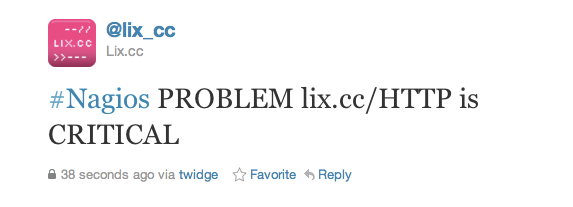Violations on users PIM
While Apple Computers decided to violate users rights once more, ceasing the capability to synchronise PIM (personal information management) data locally with OS X Mavericks 10.9 (argueing they should store their data in their iCloud. – Bwahahahaha!1!!) there are too many PIM solutions for GNU/Linux users, whereas none of them are really feasible for users who want to switch to Free Software.
While many complain that there are too few GNU/Linux Desktop users and Linus Torvalds claims this to be his “personal failure” the GNU/Linux community fails to offer a seamless integration of GUI (graphical user interface) PIM into their OS. (Which is really sad, as fiddling around with SoGo-connector, lightning etc. does not offer a sustainable solution…)
So here is my solution:
Get DAViCal, install it on your server and get mutt, pycarddav and khal for your desktop(s), get a Jolla and you will have a beautiful and seamless PIM solution using the “good olde command line”.




 It all started as a discussion on security. I’ve never considered this an issue of importance before, even as an avid computer user. But it was made clear to me that the world is changing and apparently not in the “right” direction. Eager to get out of my shell of microsoftian comfort, I decided to try GNU/Linux, when Lx kindly offered to install it for me. He guided me through the process like the patient “older brother” (note that I purposely didn’t use “big brother”) teaching the younger sister how to ride a bike. Which is why my old windows OS was kept intact in a different hard drive. Kind of giving me a “safety” feeling, like those little wheels on kid’s bikes. I needed the reassurance that my computer world as I knew it, was still going to be available for me, two clicks away. It wasn’t difficult to get on the road of open software this way. And the curious thing is that I haven’t accessed my “little wheels” (the windows hard drive) ever since I got the new one cause I don’t seem to need it. I can ride smoothly on the GNU/Linux and it has that “cool toy” aura to it. But it is important that I could do everything I needed to, and remarked that some things work even better now! (like video chatting and the general performance of my computer). So far, I don’t miss anything (beyond some unimportant shortcut and some spanish character) and I’m overall quite happy with the change. I had prejudices, like most people, because we tend to think that things are to be valued by their price, rather than by their nature. Like most people, I too thought that open software “can’t” offer enough because it’s free. As if there was an intrinsic correlation between high price and high quality. Reality dictates this is a fallacy that we choose to ignore.
It all started as a discussion on security. I’ve never considered this an issue of importance before, even as an avid computer user. But it was made clear to me that the world is changing and apparently not in the “right” direction. Eager to get out of my shell of microsoftian comfort, I decided to try GNU/Linux, when Lx kindly offered to install it for me. He guided me through the process like the patient “older brother” (note that I purposely didn’t use “big brother”) teaching the younger sister how to ride a bike. Which is why my old windows OS was kept intact in a different hard drive. Kind of giving me a “safety” feeling, like those little wheels on kid’s bikes. I needed the reassurance that my computer world as I knew it, was still going to be available for me, two clicks away. It wasn’t difficult to get on the road of open software this way. And the curious thing is that I haven’t accessed my “little wheels” (the windows hard drive) ever since I got the new one cause I don’t seem to need it. I can ride smoothly on the GNU/Linux and it has that “cool toy” aura to it. But it is important that I could do everything I needed to, and remarked that some things work even better now! (like video chatting and the general performance of my computer). So far, I don’t miss anything (beyond some unimportant shortcut and some spanish character) and I’m overall quite happy with the change. I had prejudices, like most people, because we tend to think that things are to be valued by their price, rather than by their nature. Like most people, I too thought that open software “can’t” offer enough because it’s free. As if there was an intrinsic correlation between high price and high quality. Reality dictates this is a fallacy that we choose to ignore.